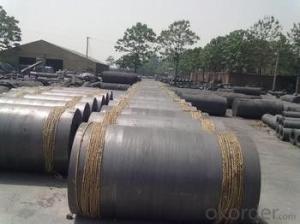When it comes to welding, the choice of electrode material can make all the difference in the quality of your work. Two popular options are graphite and copper electrodes. But which one is right for you? Let’s dive into a performance evaluation of these two contenders, with a focus on their unique characteristics, advantages, and limitations.
First, let’s talk about graphite electrodes. These are known for their ability to withstand high temperatures, making them a popular choice for various welding applications. They’re also appreciated for their versatility, as they can be used with different types of welding processes, including arc welding, resistance welding, and induction welding. However, graphite electrodes do have some drawbacks. They can be brittle and prone to breaking, which can be frustrating for welders who need a reliable tool. Additionally, they may not be the best choice for high-precision work due to their tendency to produce a less refined weld.
On the other hand, copper electrodes are praised for their excellent thermal and electrical conductivity. This makes them ideal for applications that require a high level of precision and control. Copper electrodes are also known for their durability and resistance to corrosion, which can be a significant advantage in harsh environments. However, they do come with a higher price tag, which might be a concern for some welders. Additionally, copper electrodes may not be suitable for all welding processes, as they can be less versatile compared to graphite.
Now, let’s compare the performance of these two electrode types in various welding processes. In arc welding, graphite electrodes can provide a smoother arc and better control over the welding process. This can lead to a more consistent weld, which is essential for achieving a high-quality result. However, copper electrodes can offer better electrical conductivity, which can result in a more stable arc and improved weld quality.
In resistance welding, graphite electrodes are often preferred due to their ability to withstand high temperatures and resist wear. This can be particularly beneficial for applications that involve repetitive welding cycles, as graphite electrodes can maintain their shape and performance over time. Copper electrodes, while offering excellent conductivity, may not be as durable in this context and could require more frequent replacement.
When it comes to induction welding, graphite electrodes can be a good choice due to their high melting point and resistance to thermal shock. This can help ensure a consistent weld quality even in high-temperature environments. Copper electrodes, with their superior conductivity, can also be used in induction welding, but they may be more prone to overheating and require additional cooling measures.
In terms of cost, graphite electrodes are generally more affordable than copper electrodes. This can be an important consideration for welders who are working with a limited budget or need to replace electrodes frequently. However, the higher initial cost of copper electrodes may be offset by their longer service life and reduced need for replacement.
Another factor to consider is the environmental impact of these electrode materials. Graphite electrodes are considered to be more environmentally friendly due to their lower energy consumption during production and their ability to be recycled. Copper electrodes, while recyclable, may have a higher energy footprint during their production process.
In terms of safety, both graphite and copper electrodes can be safe to use when handled properly. However, copper electrodes may pose a higher risk of electric shock due to their excellent conductivity. It’s essential to follow proper safety protocols and use appropriate personal protective equipment when working with either type of electrode.
In conclusion, the choice between graphite and copper electrodes ultimately depends on your specific welding needs, budget, and preferences. Graphite electrodes offer versatility, high-temperature resistance, and affordability, but may lack precision and durability. Copper electrodes provide excellent conductivity, precision, and durability, but come at a higher cost and may not be as versatile. By understanding the unique characteristics and performance of each electrode type, you can make an informed decision that best suits your welding requirements.

